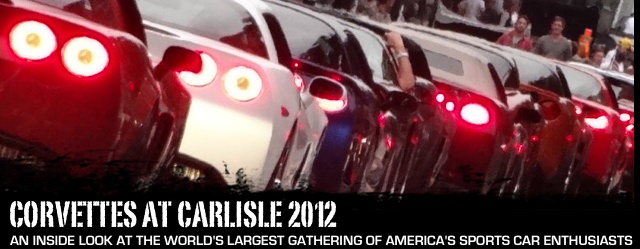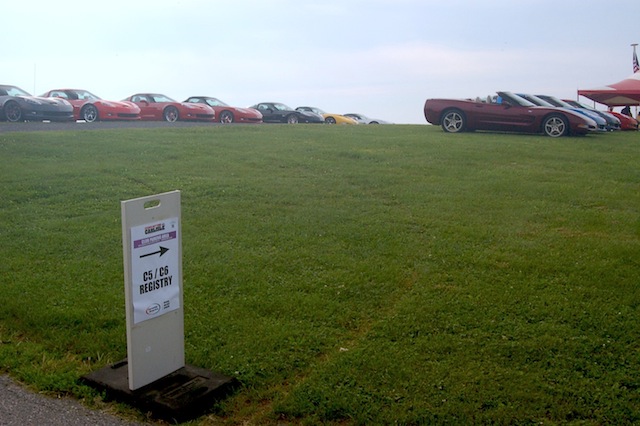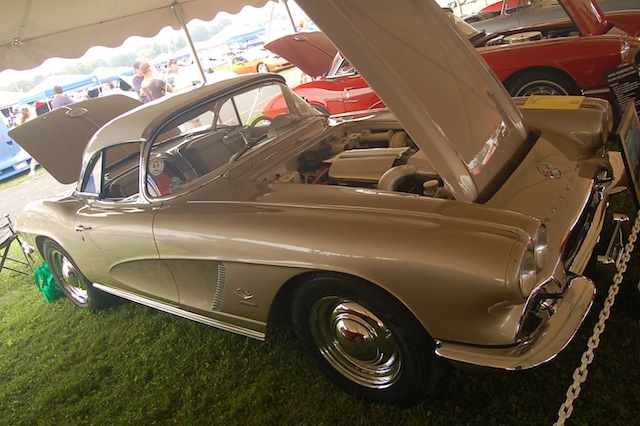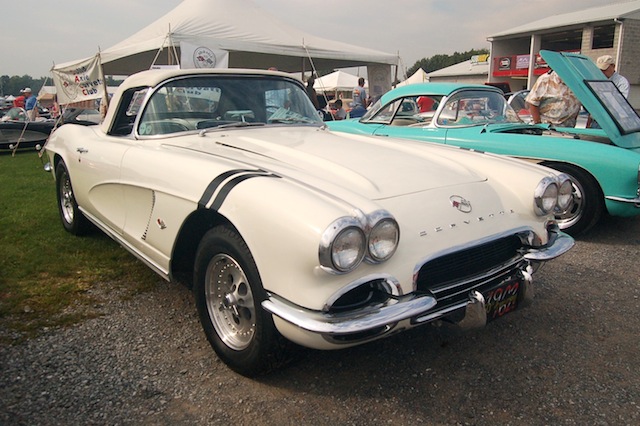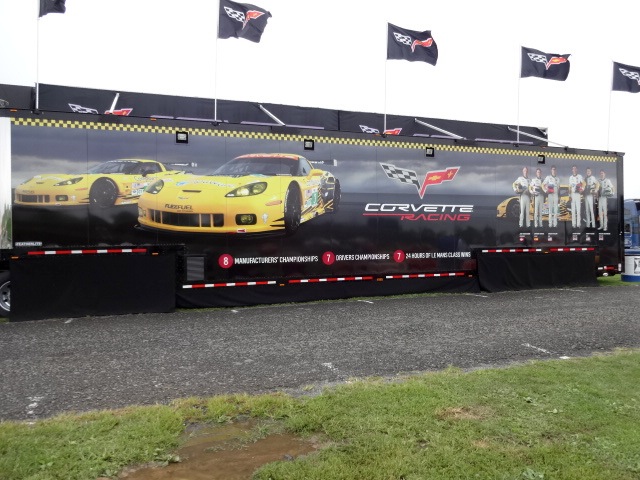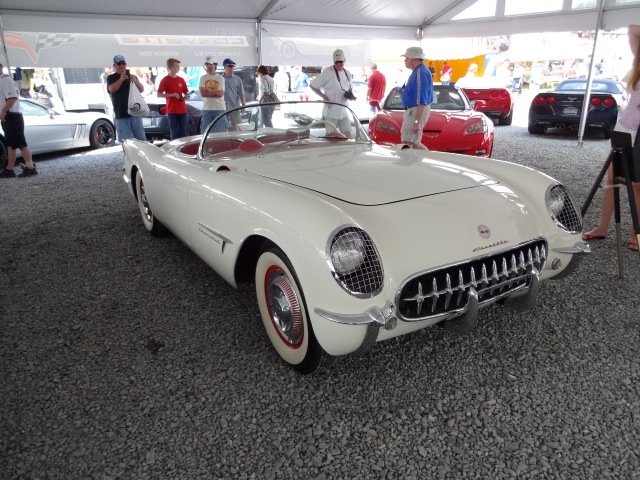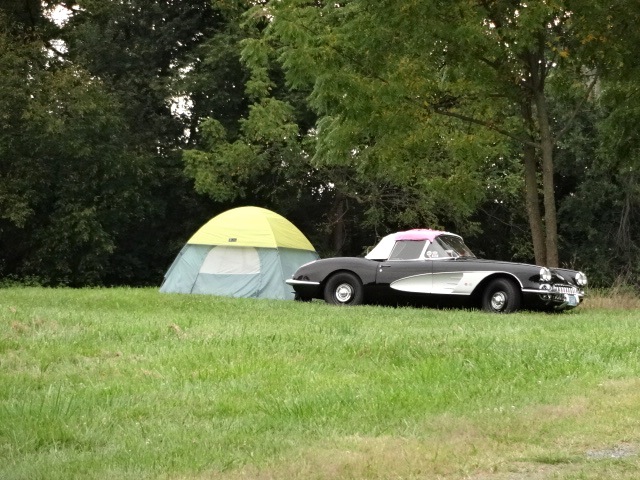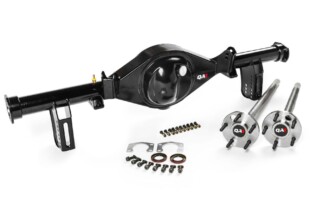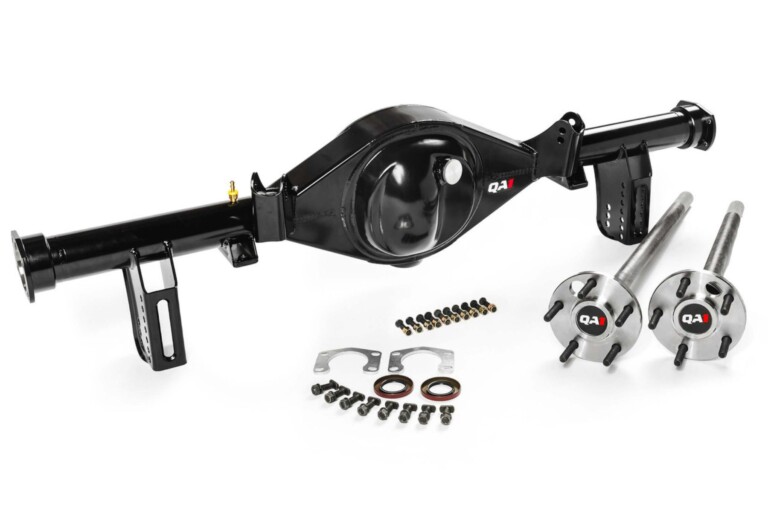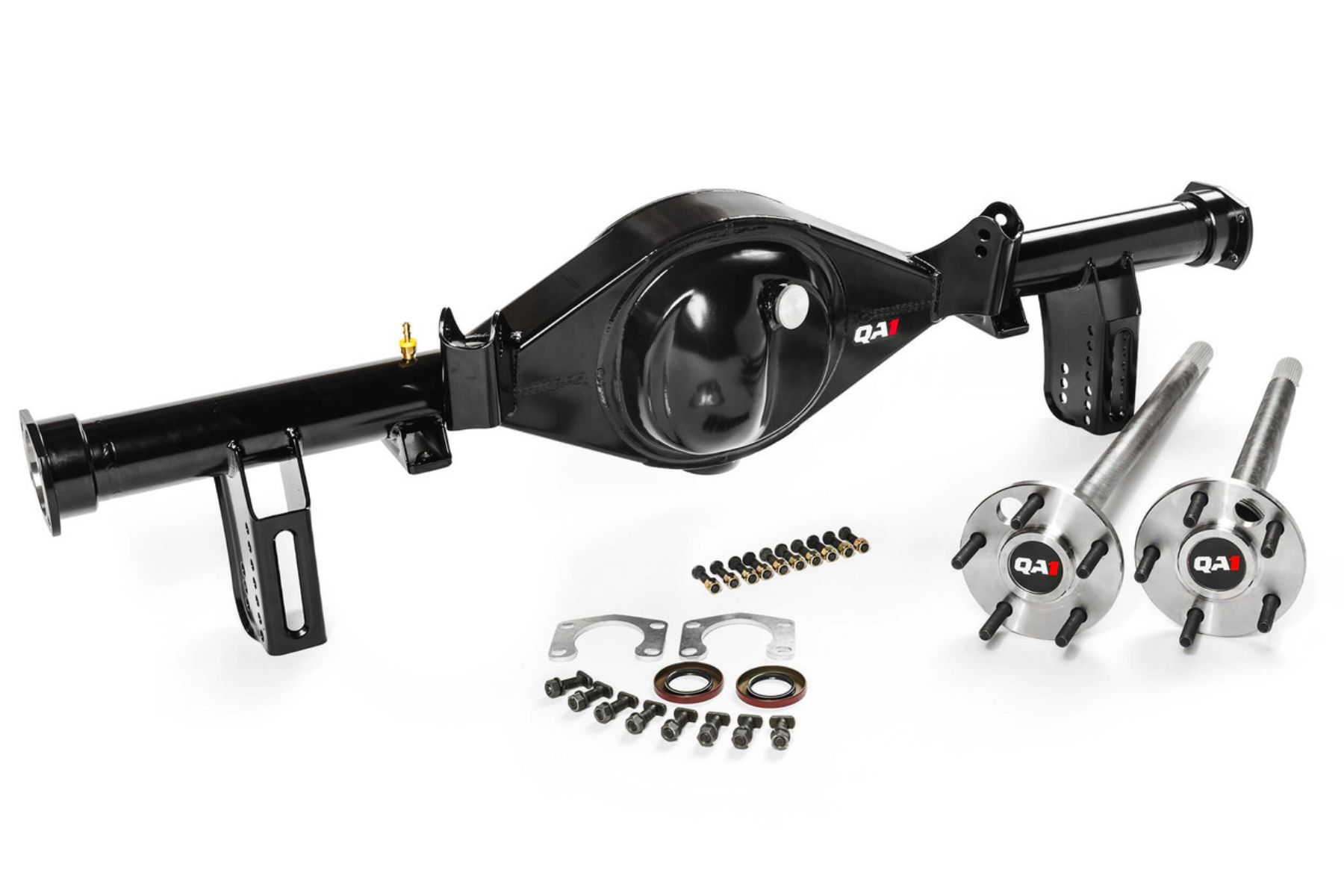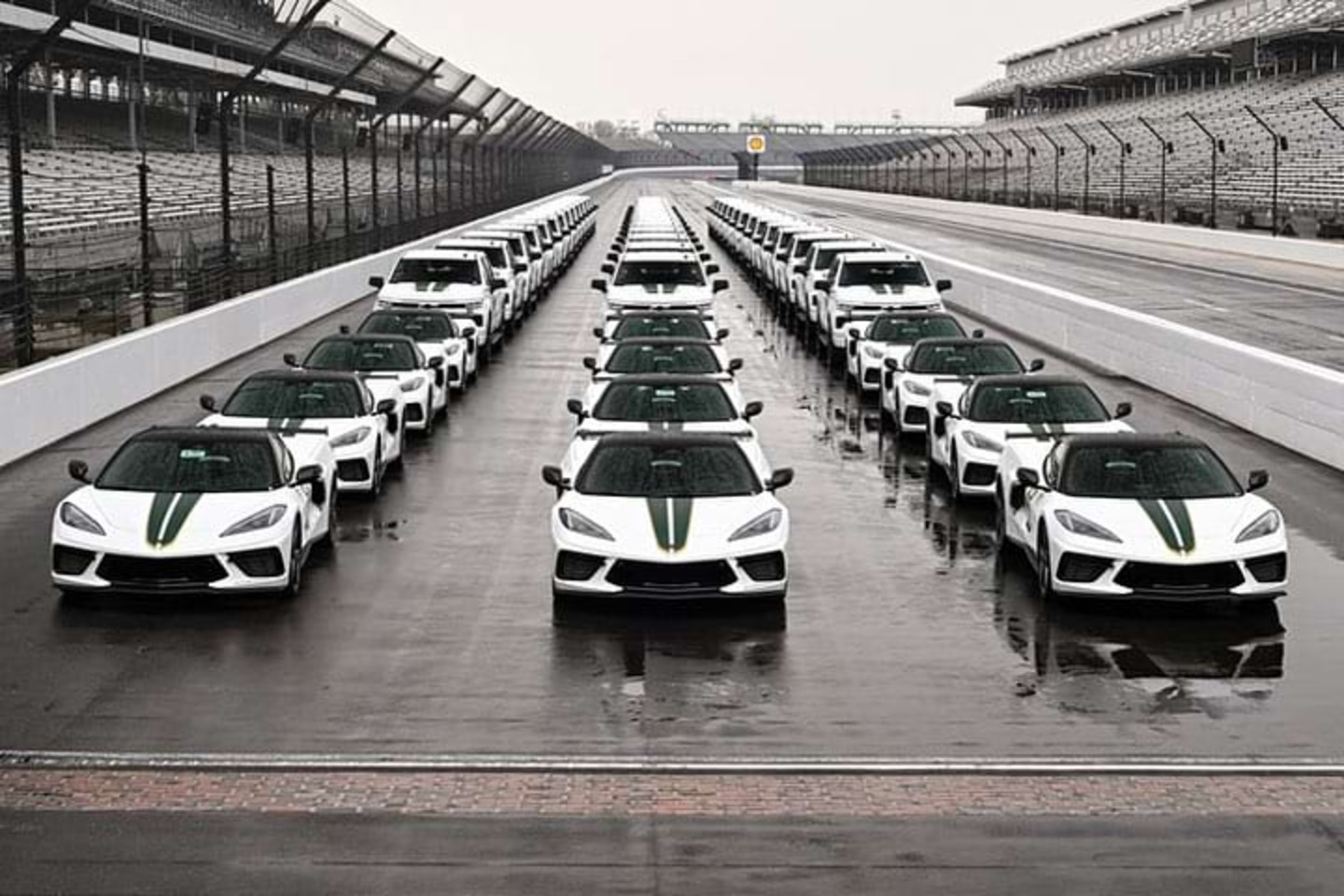America is a V-8, rear wheel-drive country. Historically, this has distinguished our nation from all others around the world. So when World War II veterans returned to these shores with jaunty runabouts from the British Isles, Detroit took notice and applied their American brand of engineering to the concept behind these sports cars. One of the products of that era, the Chevrolet Corvette, has endured to become America’s sports car.
Carlisle Events knows what it’s like – they’ve been hosting the Corvettes at Carlisle show for 31 years already. It’s the largest Corvette event in the world, featuring over 5,000 Y-bodies spanning all generations. There’s also a huge swap meet, a car corral, Manufacturers’ Midway and Installation Alley, autocross, dyno testing, and burnouts – all on 82 acres – plus a parade through historic downtown Carlisle. It’s a Mecca for Corvette fans, and it’s almost too much to take in even in person. What follows is just a taste of the full Carlisle Experience…
An Open Door Policy
There is a perception of the Corvette hobby being ruled by a bunch of men removing pebbles from their tire treads. Certainly, the purists at Bloomington Gold have set a high standard for originality that is felt beyond the Corvette world, but Corvettes at Carlisle shows that the hobby is about more than better-than-showroom perfection. Modified Corvettes from all generations are present, from pro touring C1’s to “tuner” late models, and all points in between. In the Corvette world, it’s a big tent and everyone’s invited.
Corvette owners giving love.
When you own a Corvette, you don’t just own a car – you join a club.
What's most common thing overheard at Corvettes at Carlisle? 'Hey! Nice Corvette!'

Here’s a great example how Corvettes aren't just for the Bloomington set – a 1967 big block that’s shod with Cragars and, likely, an owner with a heavy foot.
The same could be said for this stock 2010 Grand Sport.
Five Decades Later
It’s been 50 years since the C1 took its final bow. It also was the first year for the upgraded small block, the 327. To commemorate, there was a tent full of 1962 Corvettes with interesting histories.
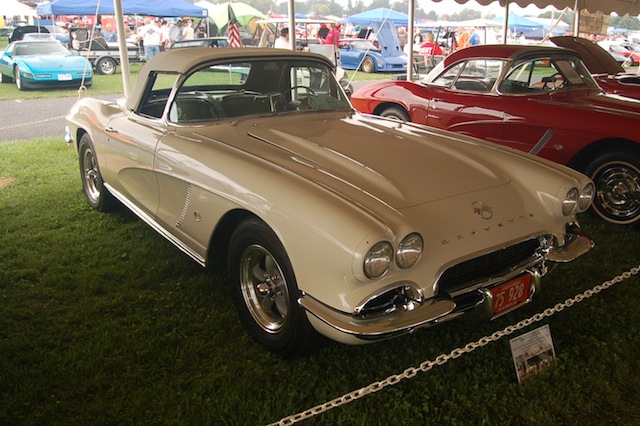
Only 820 1962 cars were painted in this unusual Almond Beige. This one has been through two Air Force trailer moves.

Renowned Corvette businessman Mike Yeager own this Big Tank (24 gallon) car, of which only 65 were built. It's also equipped with RPO 276 'wide' 15-inch wheels, RPO 441 off-road exhaust, and RPO 687 heavy duty brakes and steering.
This Sateen Silver car has been raised from the dead after sitting in a field for 38 years.
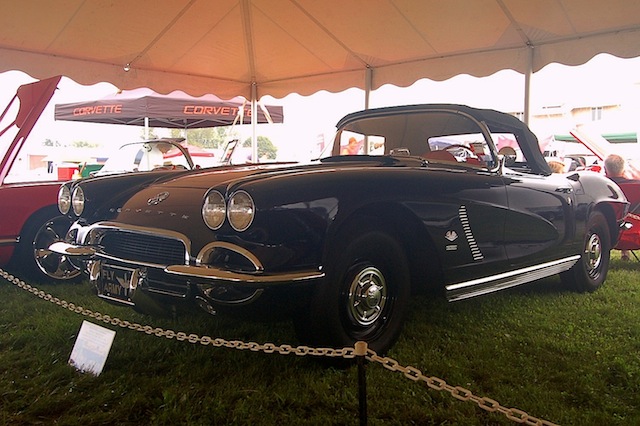
This Tuxedo Black Fuelie has won multiple awards such as the National NCRS Top Flight, Duntov Award of Excellence, and Bloomington Gold. It also has RPO 687 heavy duty brakes and steering.

Classic Corvette colors have such evocative names - this Honduras Maroon example, car #168, was built in August 1961.
S(n)akes alive! This Viper Red resto-mod has an LS3 stuffed between the front wheels and a Tremec tranny behind it.
1960-61 marked some visual changes in the evolution of the Corvette. The grille went from chrome teeth to a mesh affair, and the smooth rump of 1958-60 was sculpted into the “ducktail” style that would continue into the next generation.
1961 vs. 1962
From Big Block Glory to Smogged and Slow
The end of the line for the C3 was in 1982. It was the swan song for a Corvette generation that had gone from being the car that astronauts drove to one better known for style than performance. From this point forward, things were going to get better for the Corvette, but that didn’t mean you couldn’t have fun and put your Vette in its proper place, as evidenced by this 1980 version below with sidepipes and likely more. Fast-forward 20 years and this Lingenfelter Corvette could make you forget the dark days ever existed.
While there was a significant change from C1-C2-C3, Corvette styling has been more evolutionary instead of revolutionary since then.
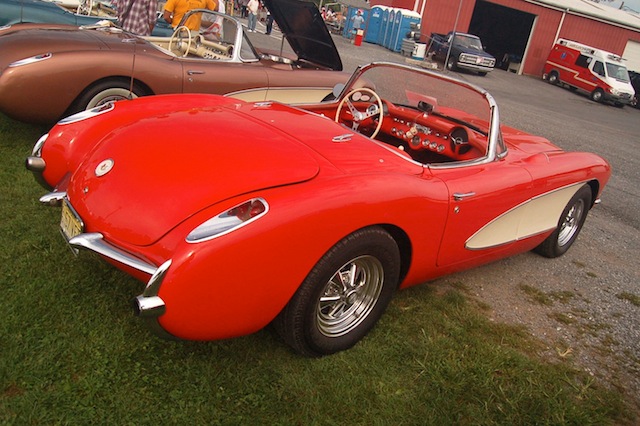
You see plenty of 1957 "shoebox" Chevys with Cragars, but when was the last time you saw a '57 Corvette with the same wheels?

Here’s a ’56, which was the year for the Corvette’s first facelift. A 265 with 2x4 carbs and beige highlights make this copper car a looker with the suds to back it up.

It's estimated that 300 Pennant Blue Corvettes were built in 1954. 3,334 were built in total that year.
Some people love the look of a classic Corvette but want the drivability of a modern car. Is this the answer? Only you can answer that.
Here’s another 1956 Corvette. This is one of 147 Cascade Green/Beige cars produced that year. The current owner bought it in 1965 for $800 – his first car – painted it maroon and swiftly started having fun. Two years later he painted it black, got married, and continued to use it every day. He sold it in 1971 for $1,200. Thirty-six years later, it was located in Pennsylvania and bought back. Now it’s back to its original color combination and has electronic fuel injection, a C4 suspension with power steering, 4L60 automatic transmission, and 4.11 gears out back.
The word 'patina' is often used to describe the original paint job of a survivor like this white/silver 1960 that was all-original except for seat covers. The owner was hoping for a cool $85k for this 283/230 4-speed car. For a little less scratch, this supercharged 2011 would be a nice survivor 50 years from now.
Nineteen sixty-nine was the second year for the C3. Standard motivation went from a 327 to a 350 with the 427 being optional, both with numerous states of tune available. These wire wheels, popular 40 years ago, add a touch of the exotic to this “Rough Rider.”
Legendary Speed
The Connecticut town of Old Lyme, situated between New Haven and Providence, Rhode Island, may be the most important Corvette location outside of Bowling Green. This is the home of the operations of Callaway Cars. Reeves Callaway started out turboing BMW 3-series cars. This led to working with Alfa Romeo to turbo their GTV6, which caught General Motors’ attention. A prototype was authorized and, in June 1986, a 345-horse Vette was presented to GM and the media. That was the impetus for RPO B2K, the twin-turbo Corvette.
To this day, Callaway is the only non-GM company to have an RPO code.
Supercharged Callaway Corvettes were putting out over 600 horses by 2010. Note the grille detail.
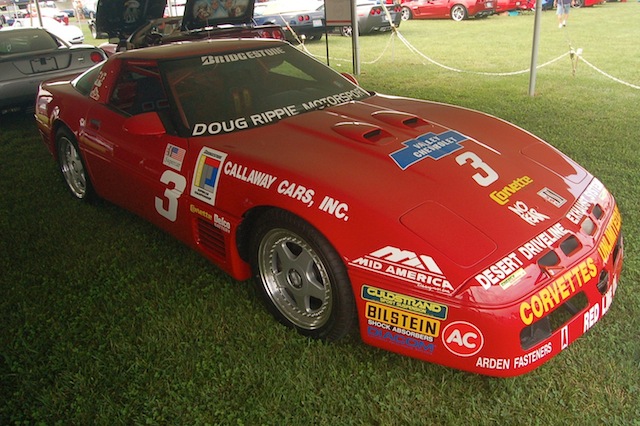
In 1991, Callaway developed an IMSA racer, which had the AeroBody kit. Lead ballast was added to bring weight up to 3,449 pounds.
In 1991, Callaway built 10 Series I Speedsters. This one has red leather with wool carpeting.
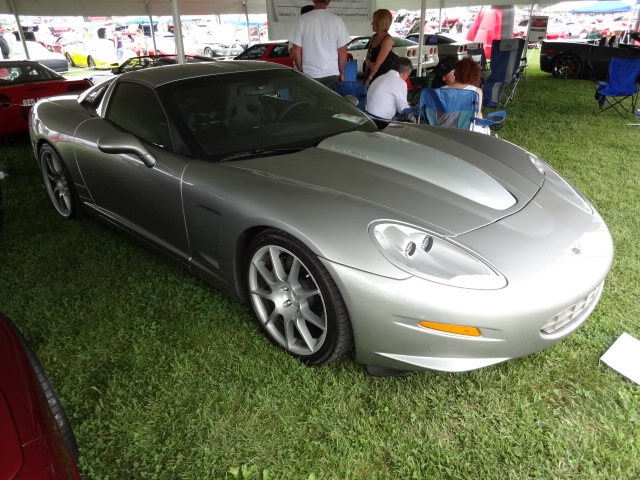
Nineteen eighty-eight marked the 35th anniversary of the Corvette. Chevrolet built 2,050 of these white anniversary cars, but this is one of a handful given the Callaway treatment, with this one being the only one known with a six-speed manual.
A Favorite with Tuners
Joel Rosen’s Motion Performance, in conjunction with Baldwin (Long Island, New York) Chevrolet, was known for creating the ultimate Corvette supercars. None were present at Carlisle, but that doesn’t stop current hobbyists from being influenced by Motion.
Only four of these Sunoco Racing Blue Daytona Corvettes were built by John Greenwood in 1981. Custom body panels and a turbo motor were but two features that came from the race car, allowing a 165 mph top speed.
After complaints about poor quality with the 1968 debut of the C3, things improved a bunch. There were 427s in five states of tune; this 390-horse four-barrel convertible was the lowest horsepower version.
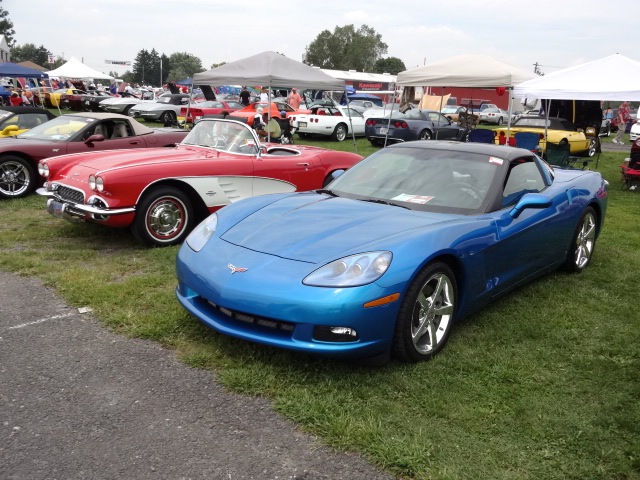
All Corvettes share a certain genetic makeup, if you will. It may be difficult to connect the lineage between this ’61 and C6, but if you track the evolution of the Corvette, it’s quite obvious they are from the same family.

Nineteen seventy-eight was a popular year for the C3 due to the Pace Car and Anniversary editions, putting the ‘regular’ Corvette in their shadows. The owner of this L-82 Anniversary edition has added sidepipes.

The last year of the convertible for the C3 Corvette was 1975. It wasn’t until 1986 that it was revived with the C4.
In 1970, Chevrolet introduced the LT-1 350 for the Corvette and Camaro. In the Vette, it was rated at 370 horses – almost as much as the LS-5 454. It’s perhaps the greatest iteration of the small-block Chevy motor, but only about 5,000 were built in three years.
Black was the rarest color for 1968, with 708 built. This convertible originally had the standard 327/300 hooked up to a wide-ratio M20 4-speed and 3.55 gears, but now it has a warmed-over 350 with Kiesler overdrive five-speed. At the other end of the chrome-nosed Stingrays is this ’72 LS-5 454 convertible. Starting in 1973, Chevrolet gave the C3 its first facelift.
After returning from Vietnam in 1972, Hank Miller purchased this ’69 with a tad over 16,000 miles from his cousin for $3,400. It was equipped with the L71 427/435, M-21 close-ratio four-speed, 4.11 gears, and transistorized ignition. Painted Monaco Orange, it has received a few minor modifications that really set it off.
If the musician formerly known as Prince owned a Corvette, would it look like this?
The 1973 Stingray is unique because it had the new soft nose yet maintained the Kamm back from 1968-72. This one has received the wide-body modifications that the race cars had.
Corvette customizer Bill Silva modified 125 cars to look like the old Mako Shark show car. This ’76 is one of five short-tail cars.
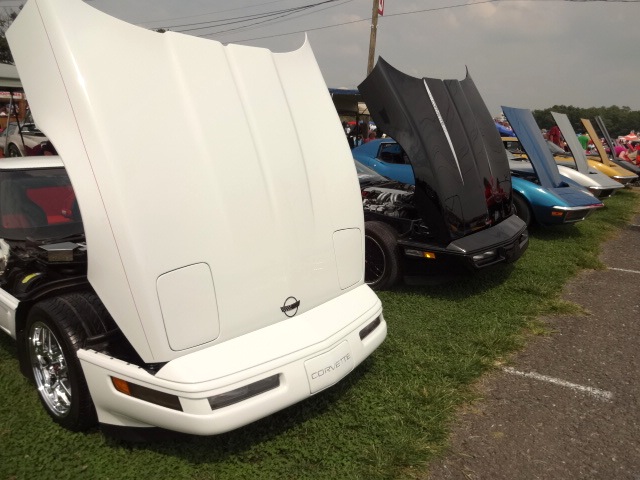
The 1967 Corvette holds the distinction of being just about everyone’s favorite, especially with the 427 and its ‘Stinger’ hood, which was available in black, white, red, or teal.

It took a while to get back to the performance of Corvettes like the yellow '67 above, but the 2013s will run circles around the best Vettes of days past.
This neat silver and red ’68 convertible thinks it’s a Testarossa.
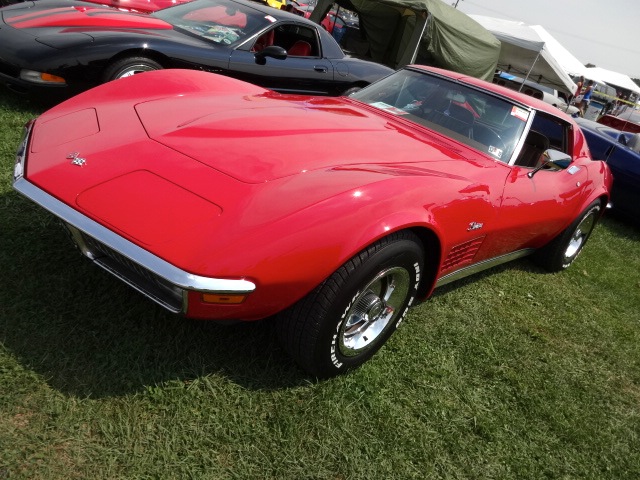
Nineteen seventy-one was the first year for lowered compression, which meant the standard 350 lost 30 horses, to 270.
The first year where the coupe outsold the convertible was 1969. The 350 was available in 300 and 350 horse versions.
There were a number of tuner Vettes at Carlisle that had this sharp black-out treatment.
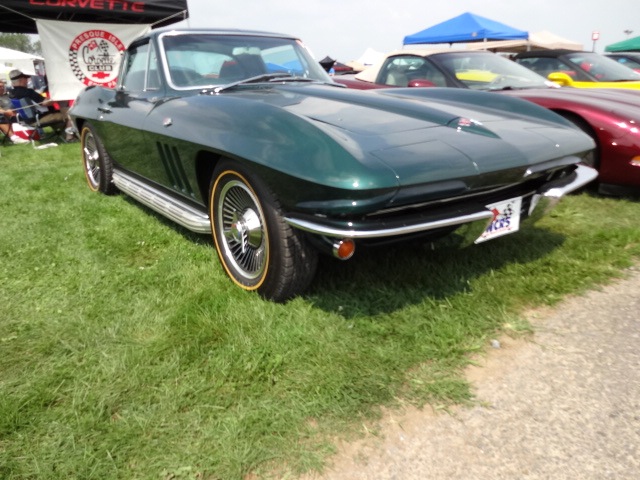
The first year for the Mark IV big block was 1965, which was the only year for the 396 since it was replaced by the 427 the following year. This Glen Green coupe has a matching dark green interior.

In 1967, 14,436 Corvette convertibles were built. Of those, 6,880 were ordered with the auxiliary hardtop. Of those, only 1,966 had vinyl covering like this one.
Domed hoods on 1970-72 Corvettes meant it had either a 454 or the LT-1 350, but only the latter had these stripes. This ’71 lost 40 horsepower due to a cut in compression.
Up on stage were a few interesting cars, including a giveaway six-speed 1992 coupe with a mere 24,000 miles. But all eyes were on this 'invisible' 1965 Corvette, as it was the development mule for the 396 that would debut in the middle of the model year.
You probably wanted the giveaway car, but your child probably wanted the racing bed with working headlights.
GM engineers were on hand to talk about the development of everyone's favorite sports car.
Kerbeck, America’s largest volume Corvette dealer, had a huge tent with numerous new Corvettes for impulse-buyers. This 2013 ZR1 was discounted to $116,372.
Over the years, Owens-Corning sponsored several Corvettes for SCCA competition, including this L-88.
Callaway also had a rather large display to peddle their wares. Right next to it was GM’s display with several Corvettes in various states of dress.
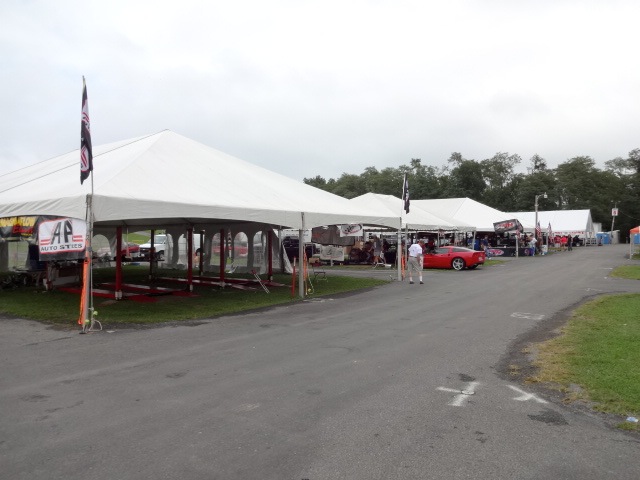
The Installation Alley gave Corvette owners the opportunity to upgrade their cars, or perhaps fix something that wasn’t quite right after the burnout contest.
Commerce at Carlisle
Out in the car corral, you had your pick of any Corvette from any generation in any condition for any price.
Some cars needed more TLC than others…
The Corvette has the advantage of being a Chevrolet, so finding parts at the swap meet can be an easy endeavor in comparison to more obscure American cars.
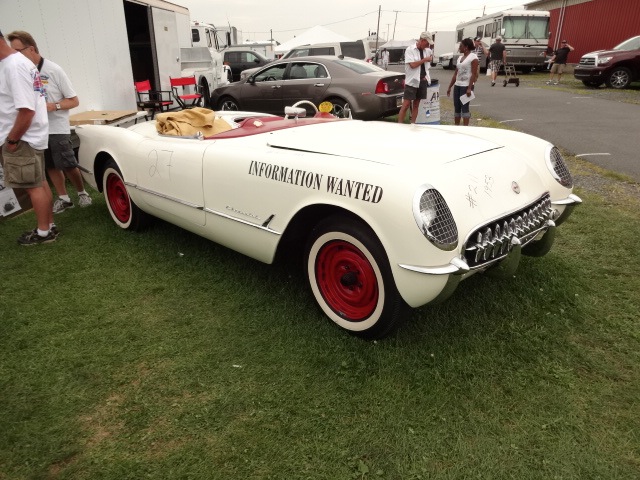
Do you know anything about this 1953 Corvette? Supposedly it had an engineering testing pedigree, and the owner was trying to find out more.
Cream of the Crop
In Building T you could find the Chip’s Choice Display. Who is Chip? The late Chip Miller was one of the guys who founded Carlisle Events. His love of Corvettes was greater than any other car, so this invitational is done in his honor.
The 1968 427 ZL-1 development engine was basically an L88 427 in aluminum dressing. Development began on August 2, 1967 and debuted for the 1969 model year. All experimental blocks had the casting code 0-294550 and were assembled in February 1968.
This 1966 Penske racer served as development for the L88 427 that was introduced a year later. It holds the distinction of being the first large-production car to win both Daytona and 12 Hours of Sebring back-to-back.
Dana Chevrolet was famous for their 427 Camaros, so it’s not unusual for this performance dealership in California to have campaigned one of the 20 L88 Corvettes built in 1967. The motor was built by TRACO Engineering, then successfully raced by John Hill all around the West Coast.
The 427 Corvette is not exceptionally rare, despite what some people may think - 3,754 of the L71 435-horse version were built, for example. Black and red seems to be a favorite color combination for many, but it’s hard to fault this white/red convertible. This black/red coupe is one of the 20 L88 cars built and has only 11,000 miles. Which do you prefer?
Bought new at Williamson Chevrolet in Marietta, Ohio, this 1968 L88 has been a race car all its life.
In 1969, this was a black/black L88 from Queens, New York. Today, it’s a skeleton that shows everything that makes an L88 what it is.

A young man from the small western Michigan hamlet of Ludington decided he wanted an L88 Corvette. He found a convertible at a dealership in Toledo and, today, it has 6,205 miles.
The L89 option was not an engine in and of itself, but rather an option for a particular motor. In other words, if you wanted aluminum heads for your L71 427, you checked the L89 box on the order form. This unrestored coupe has 6,500 miles.
The ZR-2 racing package was only available in 1971 and included the LS6 454/425 (one of 188), M22 4-speed transmission, heavy duty power brakes, transistorized ignition, special springs and shocks, and front and rear sway bars. Of the 12 LS6s ordered with this package, only two were convertibles.
A Different Kind of “Barn Find”
In the old John Deere dealership one could find the NCRS Gallery. This invitational features the crème de la crème of Corvettes.
Community as well as Cars
Saturday evening was the parade through the city of Carlisle. What’s so great about the parade is that Carlisle residents come out en mass in the heart of the historic district. Afterwards, a family friendly street party develops with bands replacing the sound of side pipes.
This couple were celebrating their wedding in a banquet hall when some guests checked to see what the hubbub was about. Everyone ran out in amazement, excited to see the Corvette buzz that was going on.
A Corvette Lover’s Must-See
If you’ve never been to Corvettes at Carlisle, you need to add it to your bucket list of events any true Y-body fan has to attend at least once. For total immersion in the Corvette experience, it’s a show that is hard to top. America’s love affair with their home-grown sports car gets a new honeymoon every year, and there’s no sign of that ever stopping.



